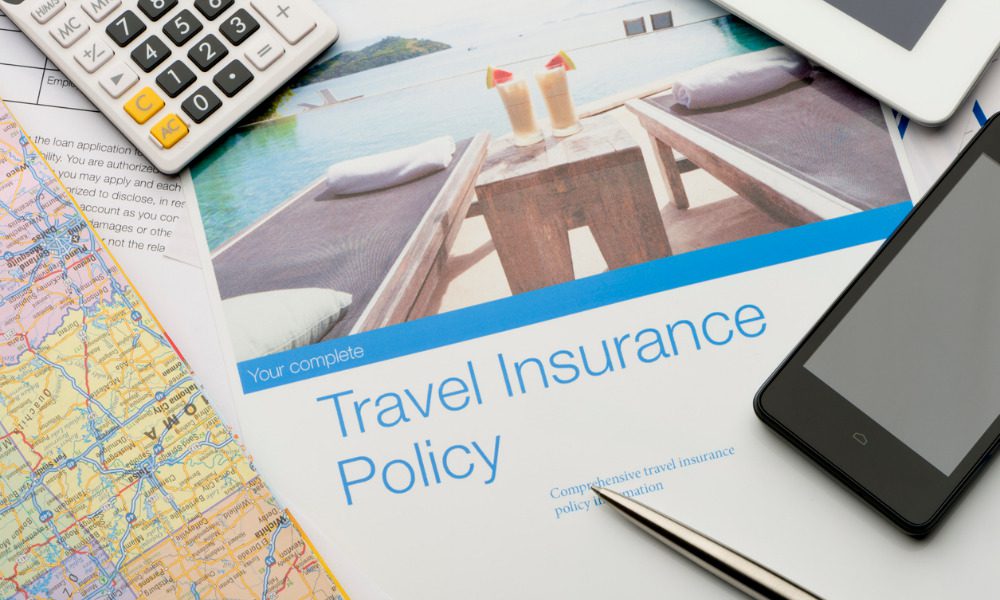Snowbird travel insurance – your top questions answered

“As we grow older, we are also more susceptible to health issues or injuries than younger travellers,” Allianz Global Assistance explained on its website. “Because most countries don’t provide free health care to visitors, travel insurance is a must-have if you need emergency medical treatment while you’re away.”
Unlike in Canada where citizens are covered by provincial health insurance and supplemental private health plans, snowbirds face exorbitant out-of-pocket expenses for medical care should the need arises while they are outside the country.
Read more: Inflation, strong US dollar will weigh on Canadian snowbirds’ plans, experts say
Who are considered snowbirds?
In Canada, a snowbird is used to describe a group of seasonal travellers who go to places with warmer climates when the winter season arrives. The name comes after the dark-eyed junco – also called snowbird – which likewise migrates south during the cold winter months.
Snowbird travellers are usually senior-aged or retired Canadians who spend several months in a destination of their choice or stay in different locations before returning to the country once warm weather comes in.
According to Toronto-based insurance brokerage Snowbird Advisor, while many Canadian snowbirds still flock to warmer parts of the US – including Arizona, California, Florida, and Texas – a growing number of travellers are becoming more adventurous and choosing “exotic destinations further afield,” especially with the Canadian dollar weakening against the US dollar. These locations include Mexico, Costa Rica, Panama, Dominican Republic, Cuba, Belize, Portugal, Spain, and Southeast Asia.
What is snowbird travel insurance and how does it work?
As the name suggests, snowbird travel insurance is a type of policy tailored for Canadians leaving the country for extended periods, offering coverage for up to 212 days. Because this group of travellers consists mostly of seniors, snowbird plans are designed to provide emergency healthcare coverage for this demographic.
Snowbird travel insurers typically offer three types of policies. These are:
Single-trip plan: This type of policy covers a specific trip for up to 183 days or 212 days for Ontario and Newfoundland residents.
Multi-trip plan: This covers unlimited trips outside Canada for a full year from the policy’s start date. Coverage ranges between nine and 60 days per destination.
Top-up plan: Some multi-trip policies offer a top-up feature, allowing policyholders to extend the coverage period for a trip. Top-up terms, however, vary between policies and providers.
Read more: Travel insurance for seniors – what Canadians should know
What does travel insurance for snowbirds cover?
Coverage varies between insurance providers and policies, but snowbird travel insurance typically covers the following medical expenses:
Emergency medical treatment
Prescription medication
Paramedical services
Emergency dental procedures
Repatriation to Canada
Some plans may also cover:
Trip interruption
Trip cancellation
Lost or stolen luggage
Elective medical procedures, routine check-ups, cosmetic surgery, and non-emergency dental care, meanwhile, are excluded from cover.
Does travel insurance for snowbirds cover pre-existing conditions?
It is very important for snowbird travellers to disclose any pre-existing medical conditions to their insurer as failure to do so could risk voiding their coverage. A pre-existing condition is any illness, injury, or medical issue that travellers knew they had prior to their departure. According to the comparison website Ratehub.ca, these include any condition that travellers “experienced symptoms of, were diagnosed and/or treated, prescribed new medication for, or changed existing medication.”
Most travel insurance policies for snowbirds provide coverage for pre-existing conditions but include a “minimum stability period,” which requires a medical condition to be under control with no major changes for between 90 days and one year.
Read more: What COVID-19-related cover do Canada’s top travel insurers provide?
Does snowbird travel insurance cover COVID-19-related claims?
The good news for snowbird travellers is that unlike at the onset of the pandemic when COVID-19 coverage was rare, travel insurance providers have since stepped up their game and have started offering protection against disruptions related to the coronavirus.
Snowbirds, however, also need to consider a few points before buying travel policies. These are:
Coverage may be “explicitly excluded” if the destination countries are under an “avoid non-essential travel” (Level 3) or “avoid all travel” (Level 4) advisory at the time of purchase.
COVID-19 vaccination status may also affect coverage – those unvaccinated by choice may have their claims declared ineligible by their insurers.
Who are eligible for snowbird travel insurance?
To be eligible for snowbird insurance, a traveller must be:
A Canadian citizen or permanent resident
At least 55 years old
Travelling outside their home province or territory for 90 to 212 consecutive days
Insurance brokerage platform PolicyAdvisor reminded snowbirds, however, to be aware that different plans may also have varying stipulations.
“For instance, if you purchase multi-trip coverage, there may be requirements about the maximum number of days you can travel and be covered for each trip,” the insurtech firm noted. “In this case, some insurance companies specify that you will only be covered for between 30 and 90 days per trip.”
Read more: Travel companies expect insurance rates to drop as advisory lifts
How much does travel insurance for snowbirds cost?
Several factors impact the price of snowbird travel insurance premiums. These include the traveller’s age and pre-existing medical conditions, length of the trip, and level of coverage. According to PolicyAdvisor, policies typically start at $500 annually.
How is snowbird travel insurance different from regular senior travel policies?
One of the biggest differences between standard senior travel insurance plans and those catering to snowbirds is the length of time for coverage. Regular travel policies for seniors cover trips lasting up to 21 days. Snowbird travel insurance, meanwhile, offers up to 212 days of coverage.
Do Canadians need snowbird insurance if they already have private health coverage?
On its website, Global Affairs Canada has warned all travellers that “Canadian public health insurance is almost certainly not valid outside Canada,” and getting treatment in “foreign hospitals can be very expensive and may require immediate cash payment.” The agency added that the government will not foot any medical bills “for an illness or accident suffered abroad.”
For this reason, all Canadian travellers – not just snowbirds – would benefit from taking out travel insurance with solid medical and healthcare coverage.
Read more: Revealed – Canada’s top health insurance providers in 2022
What should snowbirds consider when taking out travel insurance?
According to Snowbird Advisor, because each snowbird has their own unique set of coverage needs, they must also choose a policy that caters to their specific requirements. To help travellers find the right plan that fits their needs, the insurance brokerage firm shared these key questions that snowbirds must ask before purchasing a policy:
How old are you?
How long are you travelling for?
Do you plan on making one or more return visits to Canada during your trip?
Do you have any pre-existing medical conditions? If so, which conditions do you have?
Are you taking any medication? If so, which ones are you taking?
Are your pre-existing medical conditions and medications stable? If so, how long have they been stable for?
“Just like every snowbird has unique needs, every snowbird travel insurance policy has unique terms,” the firm explained. “While many policies are similar, some will meet your specific requirements much better than others and the best policy for you may not be the best policy for someone else.”
Read more: Nine simple ways Canadian travellers can save on insurance costs
How can Canadian snowbirds make the most out of their travel insurance?
Much like other types of policies, travel insurance for snowbirds provides financial protection in the event something goes wrong. Coverage details vary from policy to policy, which is why experts advise travellers to review the fine print carefully before purchasing. Here are some additional tips from industry experts on how snowbirds can make the most out of their policies:
Shop around and compare travel insurance quotes
Make sure you have the right type of coverage – most policies offer cover for pre-existing conditions as long as these meet the stability clause
For those travelling two or more times a year, opt for annual or multi-trip plans
Review policy details to see if you are getting the best coverage possible
Be upfront and honest about the information you provide as failure to do so risks voiding your policy
Don’t just settle for the cheapest policy – make sure you choose the cover that suits your needs





